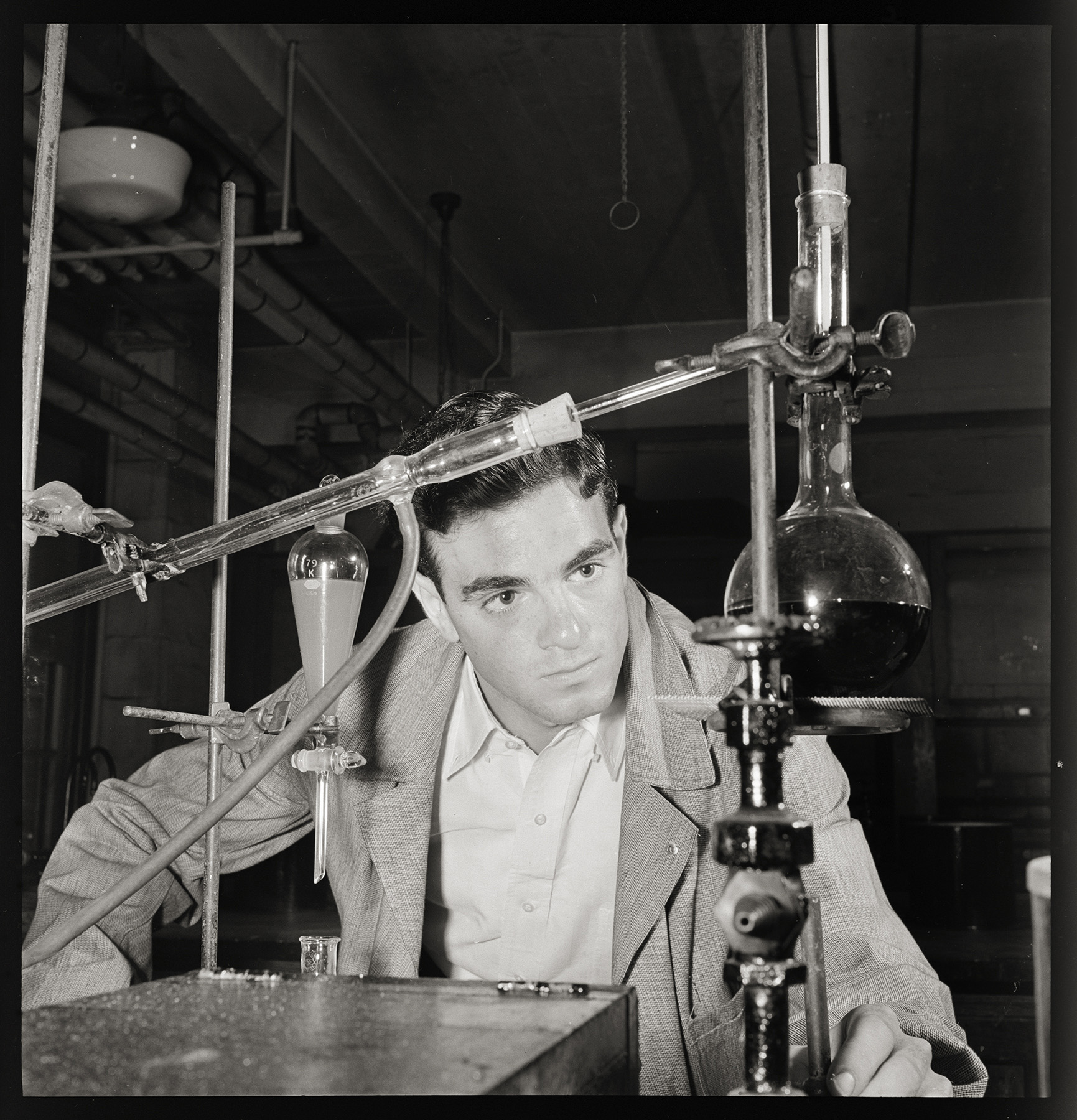Rehabilitation — NYU
After seven months in the army, 19 year-old Bernard Berger of Yonkers, New York, injured his knee while jumping a wall on a training course. “For young Berger, that was the end of the war. While his buddies were sailing overseas to European battle fronts, Bernard was heading for home.” He received a medical discharge February 18, 1944.
He thought that the next best way to serve his country in war time would be to build planes. But his job at an aircraft factory required him to “jump onto a jig” in order to reach extended airplane frames. “Bernard’s injured leg stood this punishment [for] two months. Then he was on his way back to an army hospital.” His brothers and friends were all still in the service and Bernard felt lonely, out of place, and uncertain about his future. He suffered depression, “with doubts in his mind as to his future, questioning, worrying, fretting.”
James Dooley, a Veterans Administration counselor, helped Bernard return to college, offering financing for all four years of tuition and expenses under the GI Bill.
Although a more mature Bernard found it difficult to relate to his younger classmates at NYU, his experiences led him to take his engineering studies more seriously than his peers and he had a deep appreciation of his chance at a new future.
To accompany this set of photos, Kosti Ruohomaa wrote a detailed article and captions for a story in a series of articles entitled, “When G.I. Joe Comes Marching Home.” Nine of these photos were published in the September 17, 1944 issue of Parade Magazine, pages 4-7.
(from Kosti Ruohomaa’s notes)

